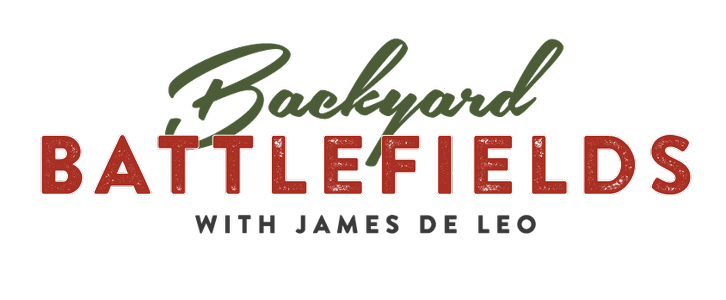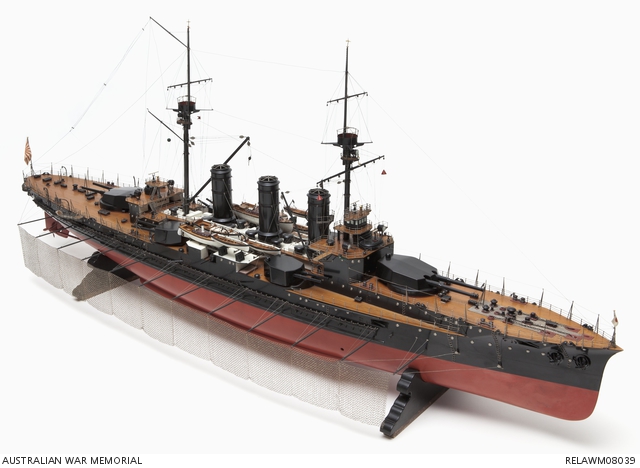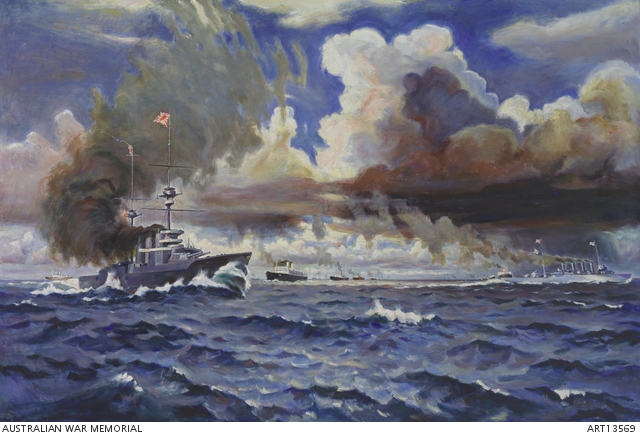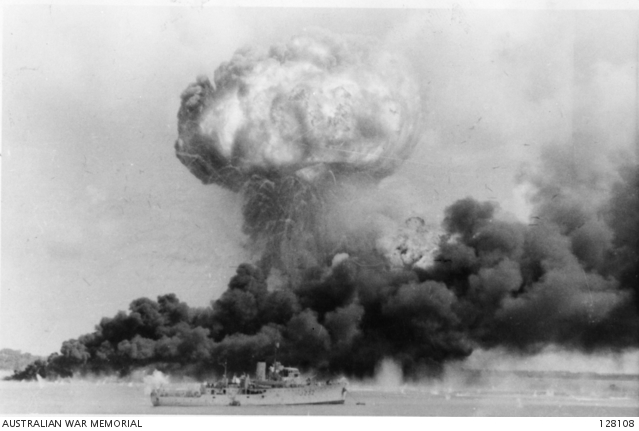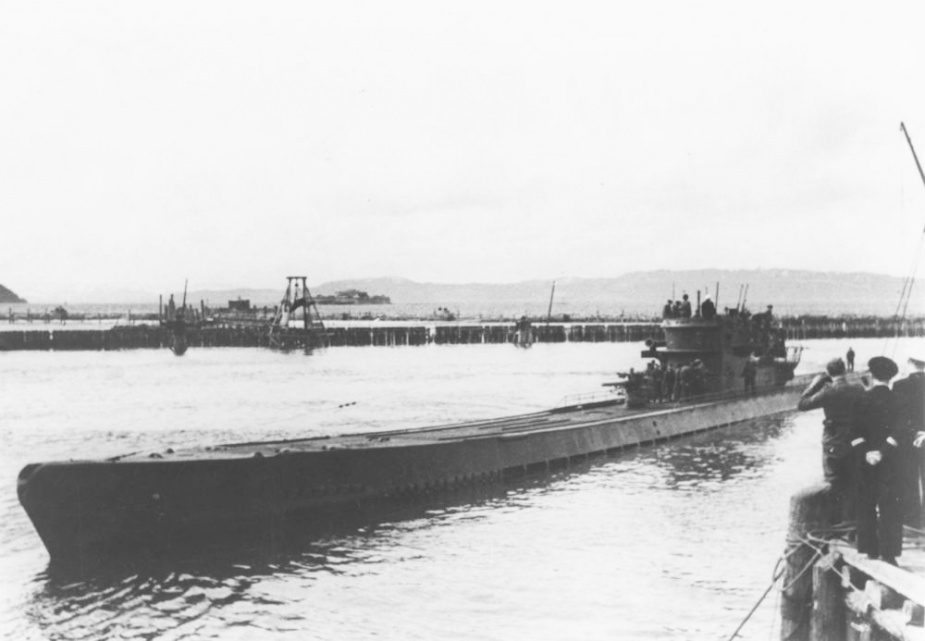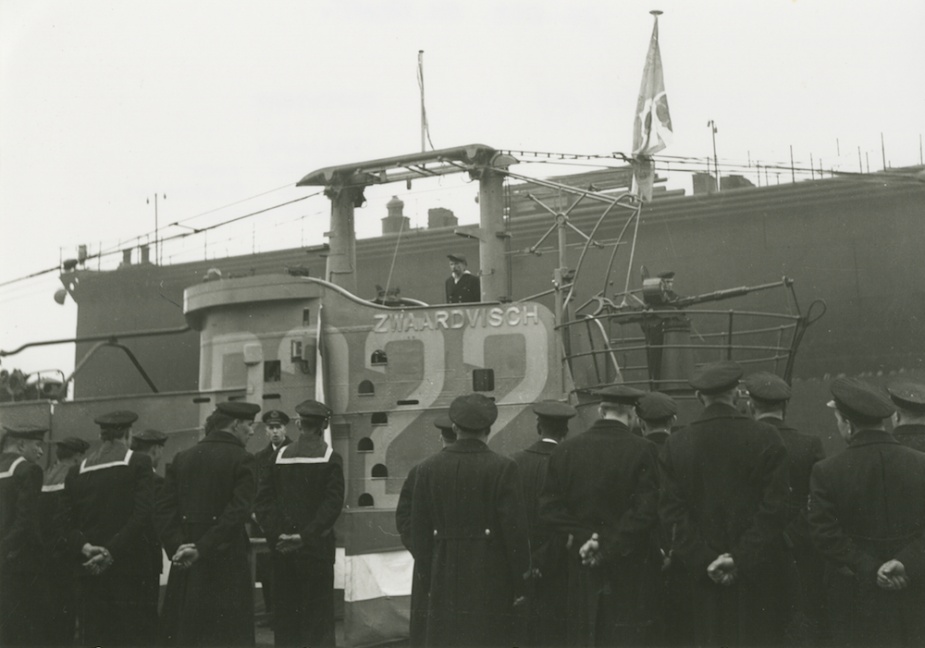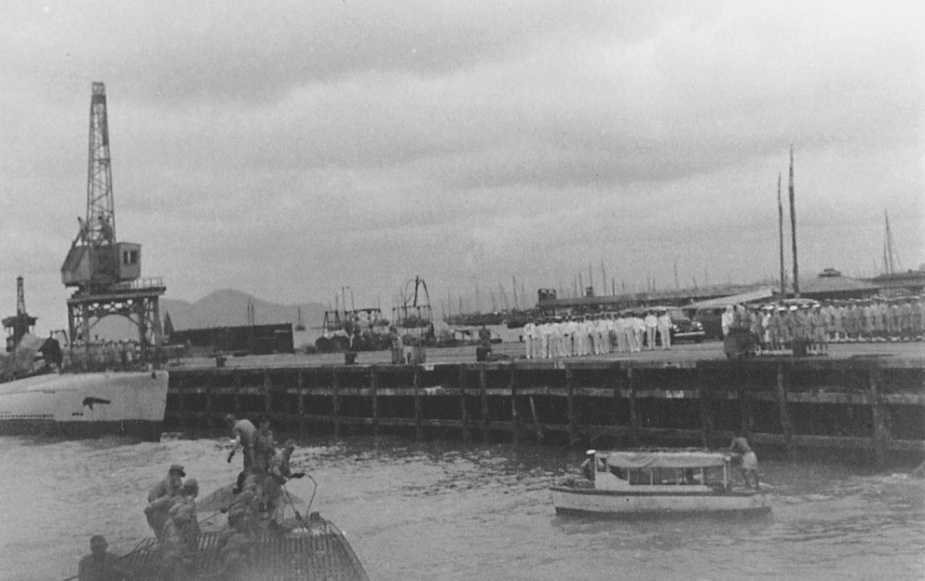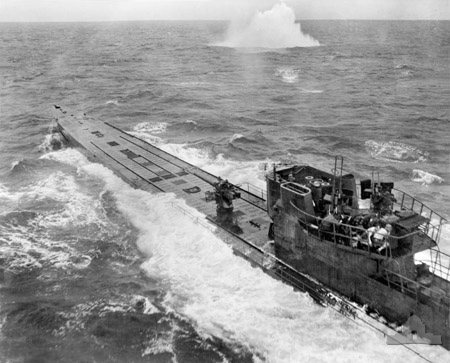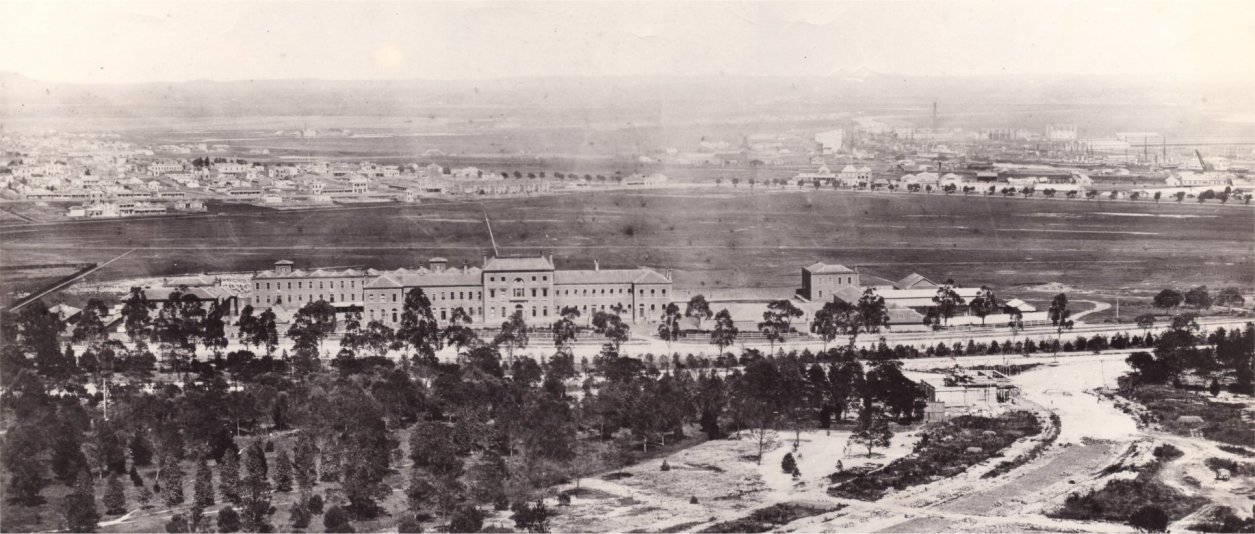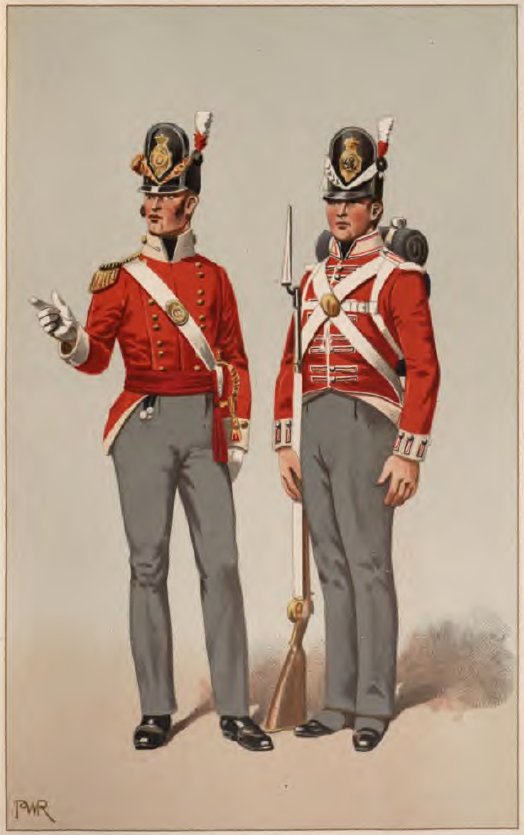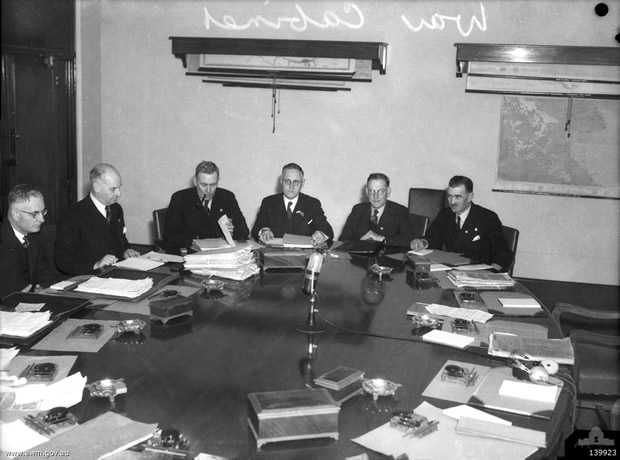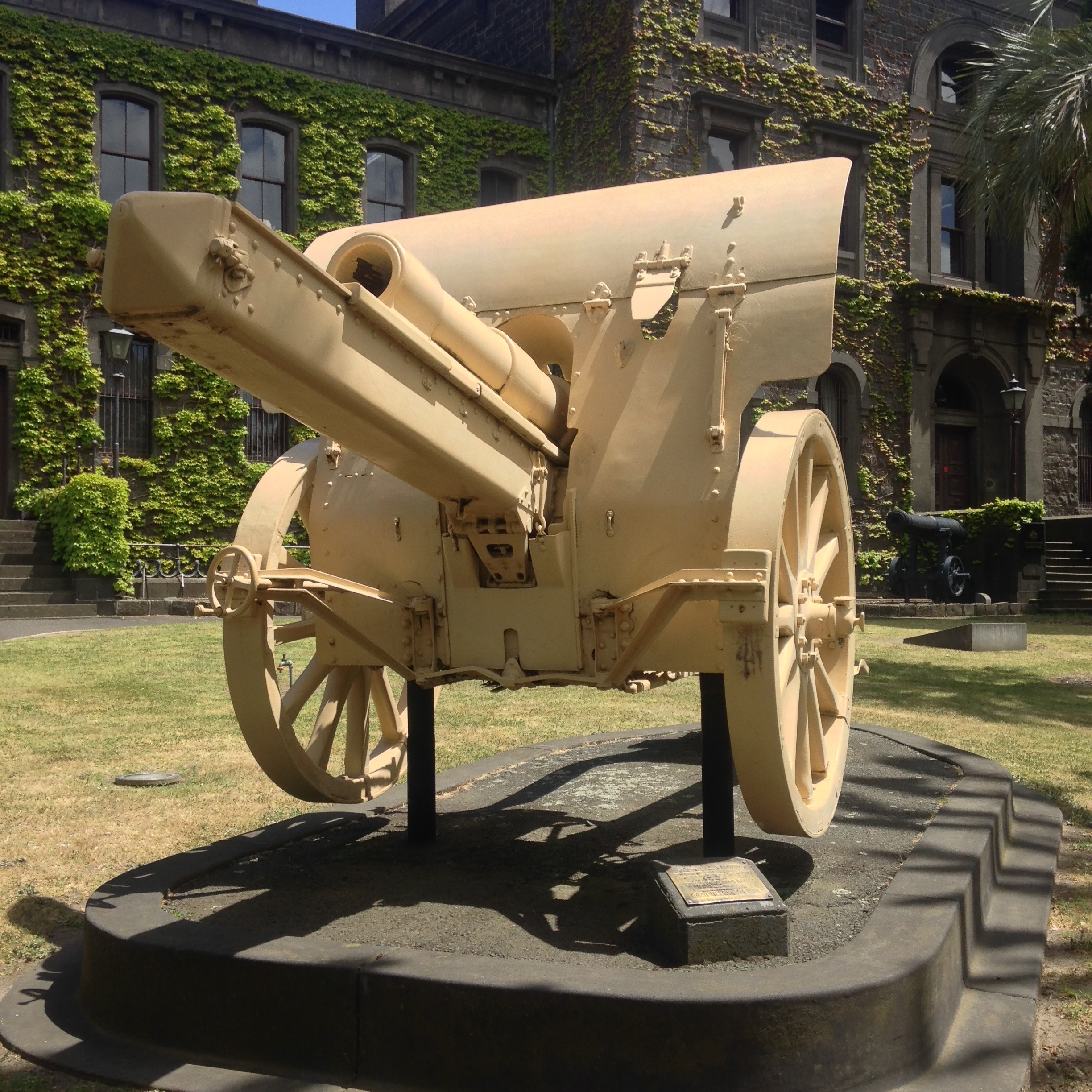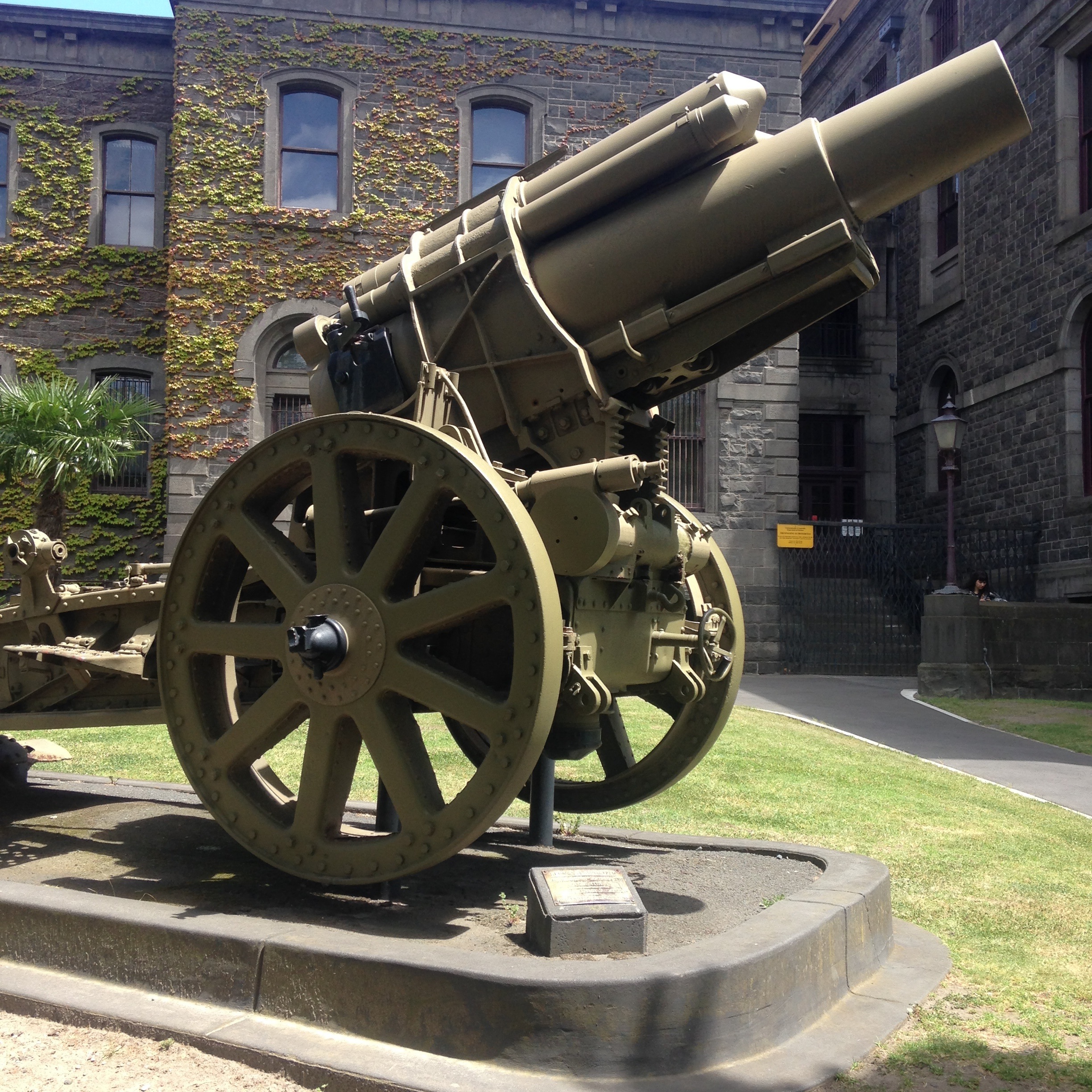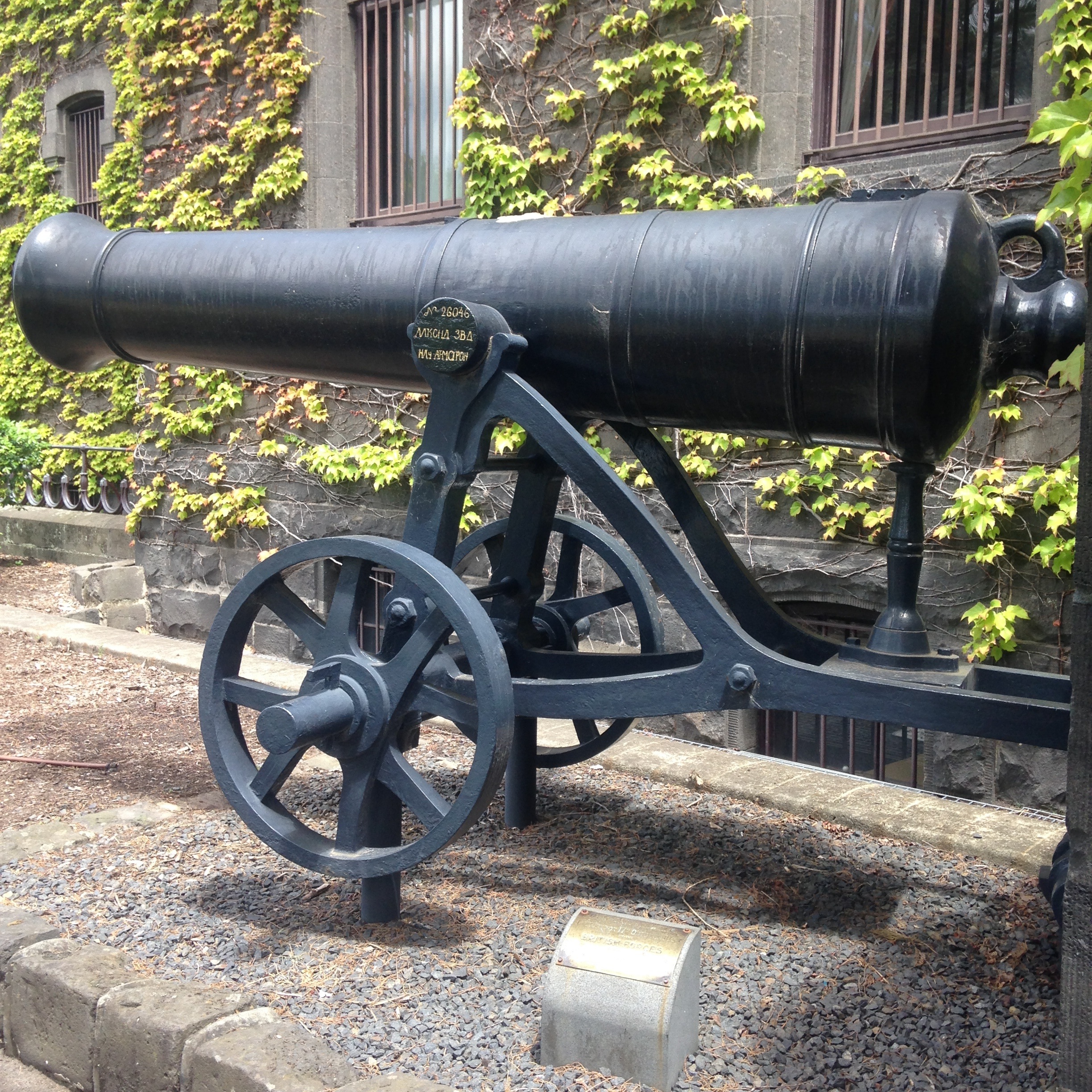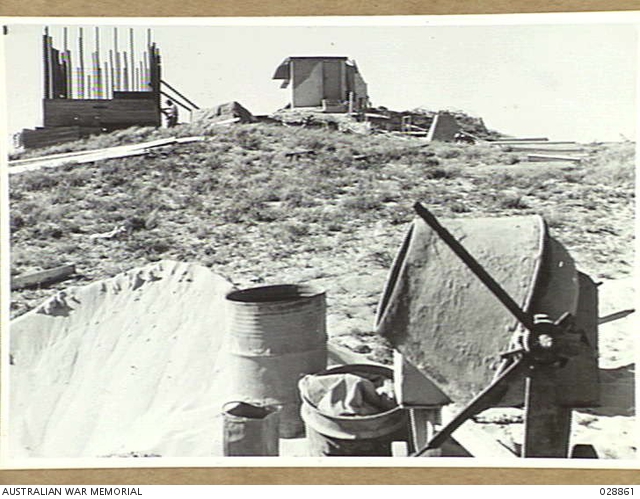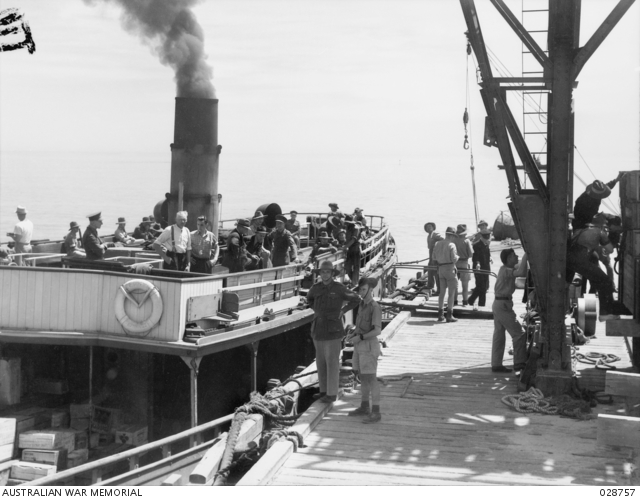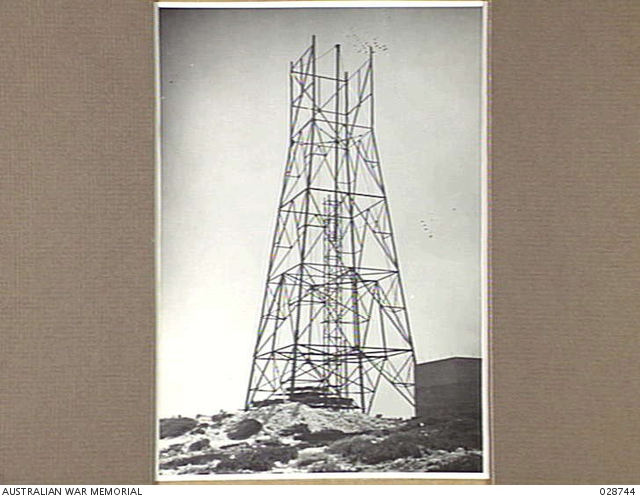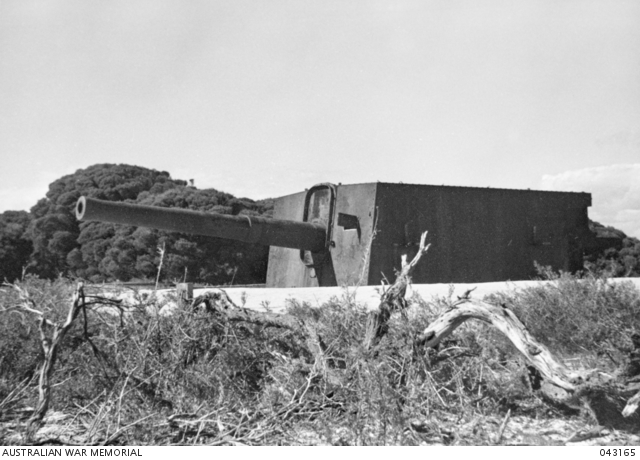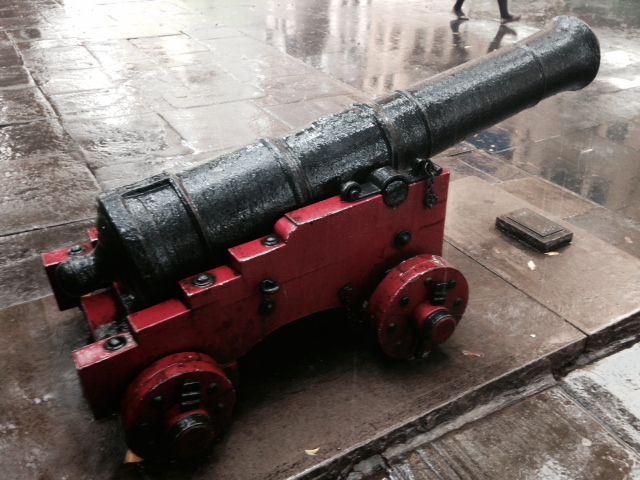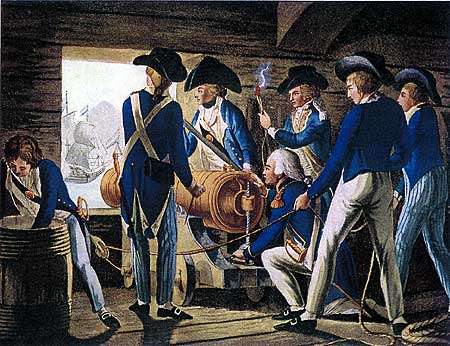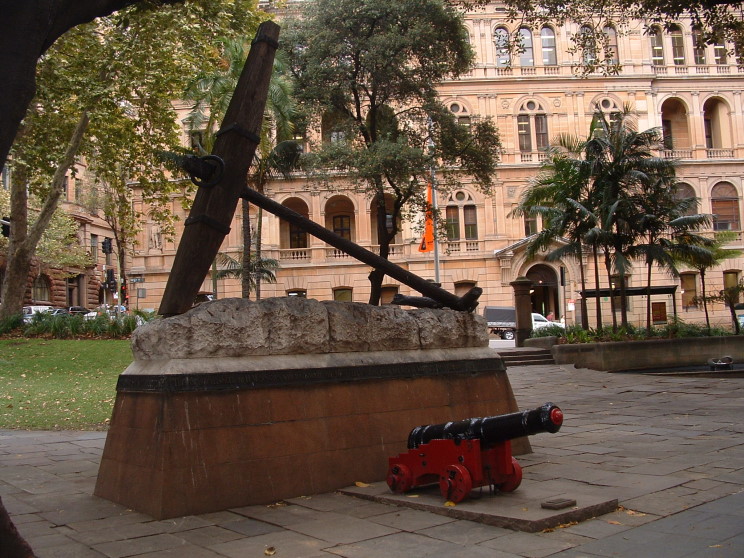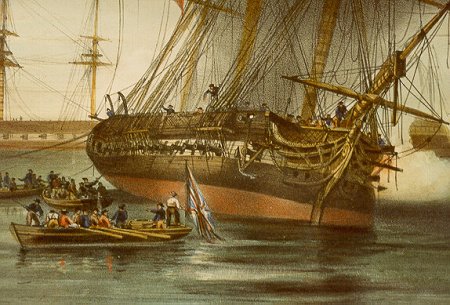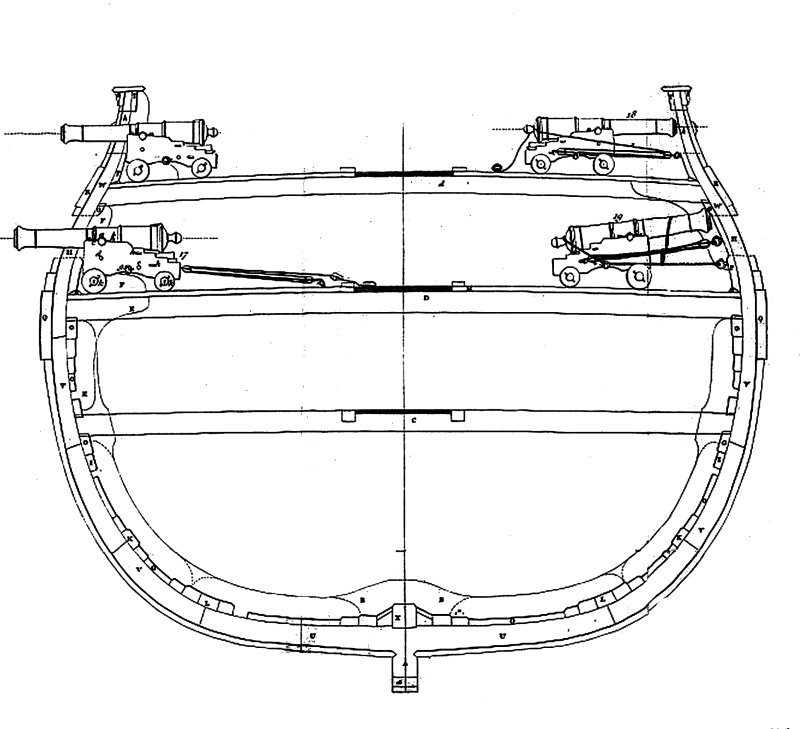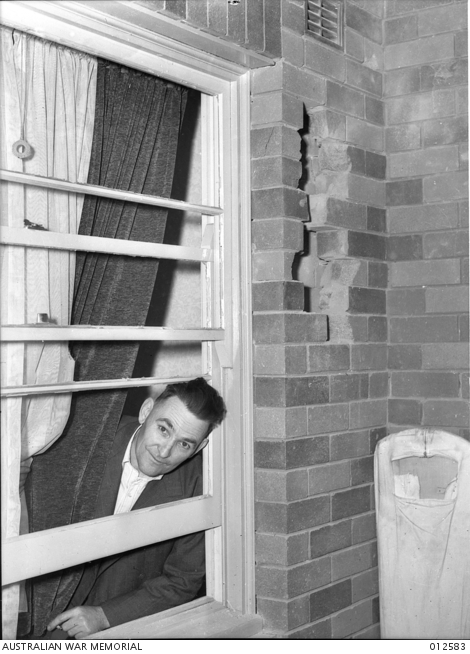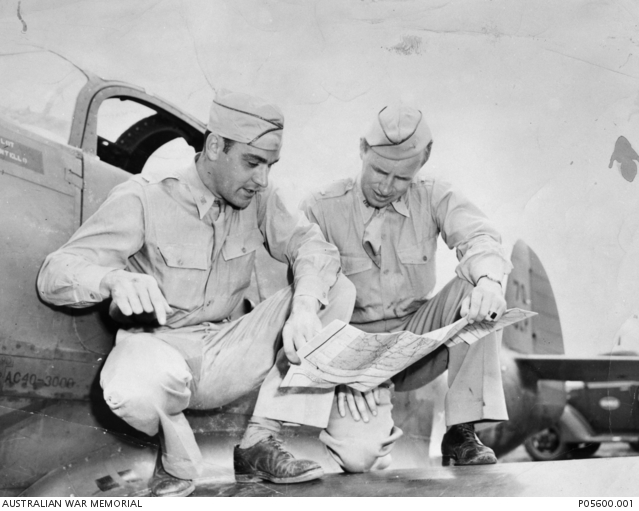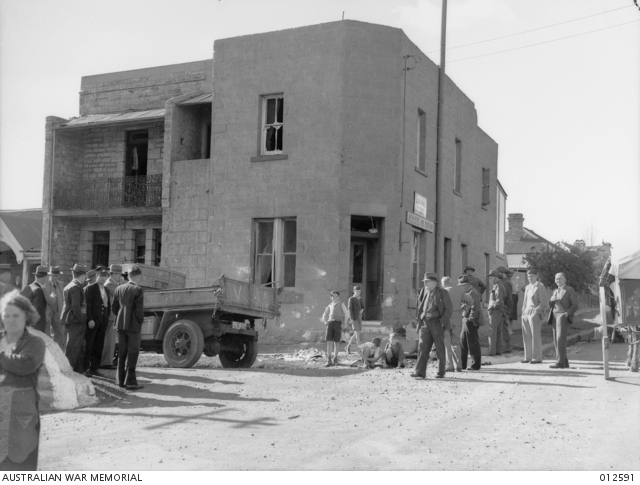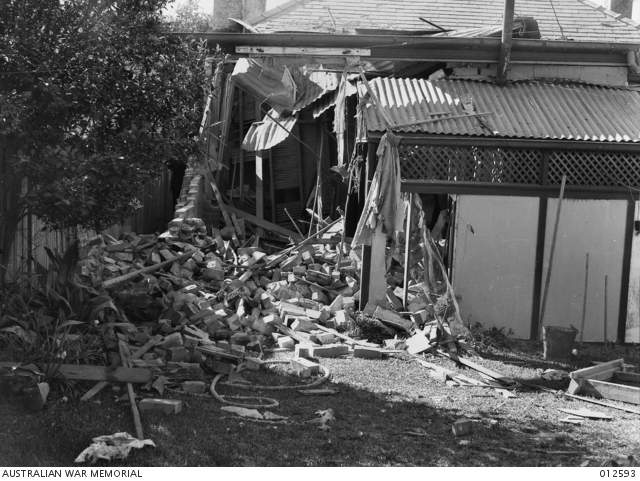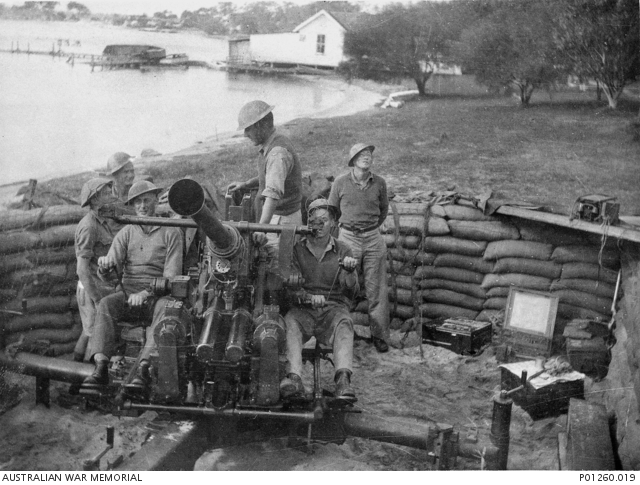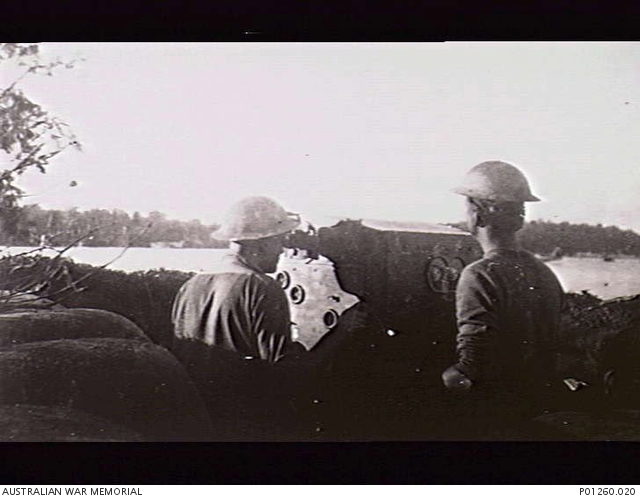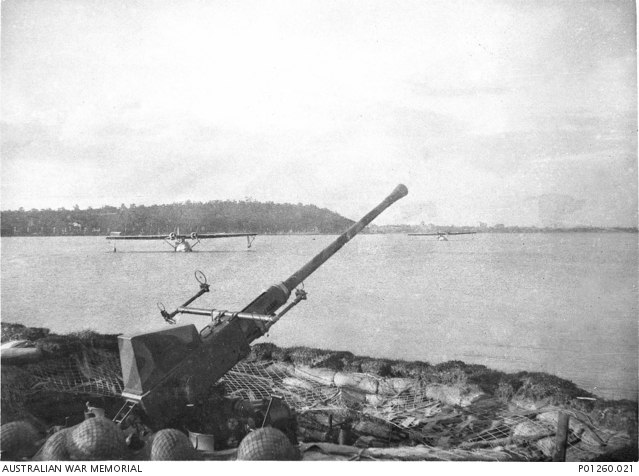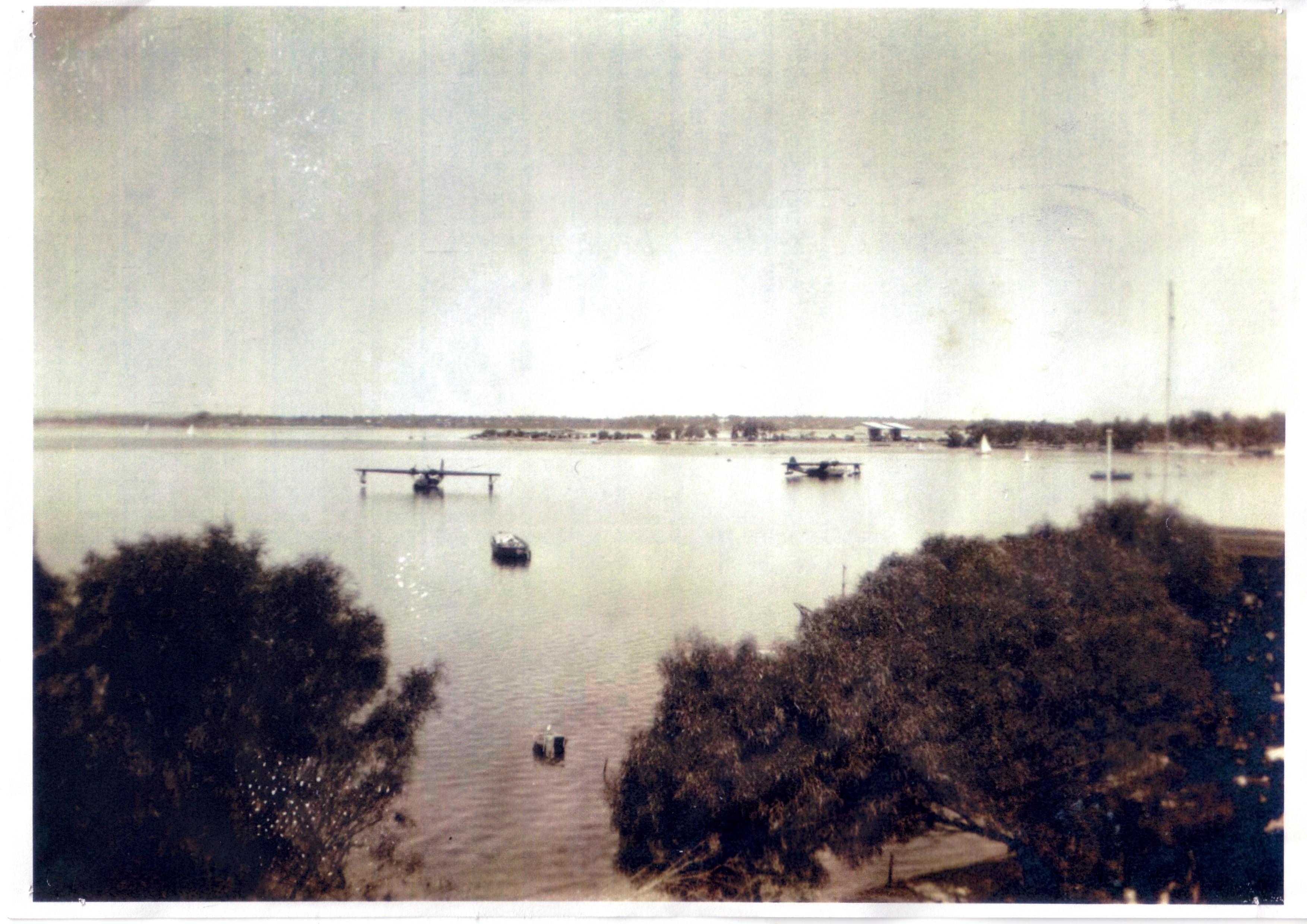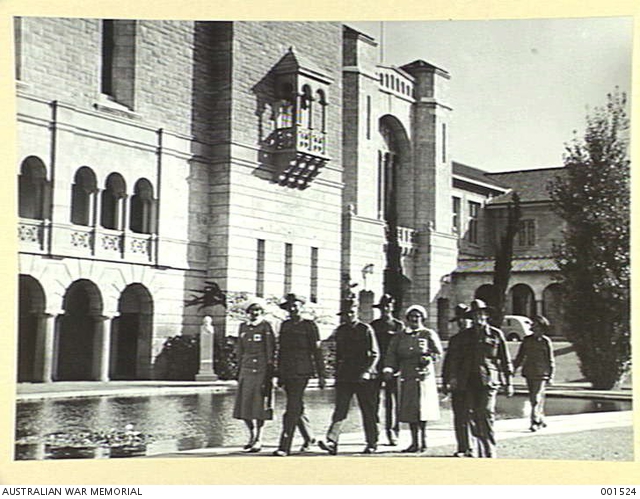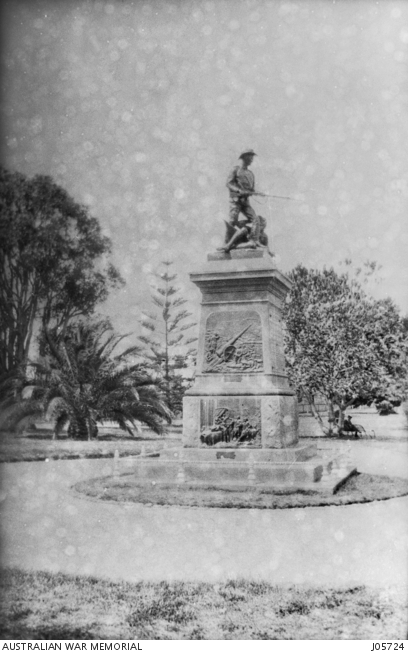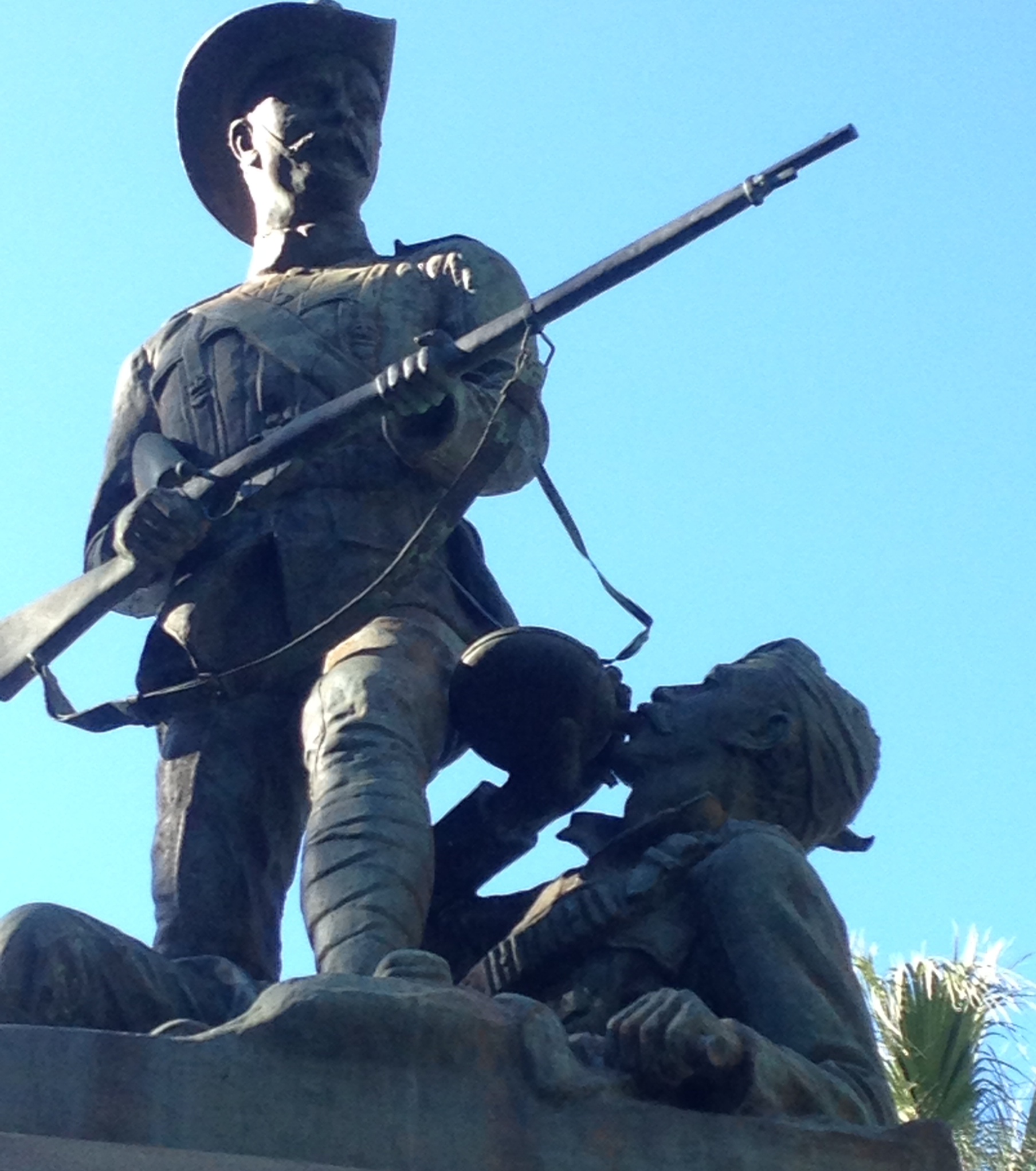The IJN Ibuki is a Japanese battlecruiser that escorted the 38 transports carrying the Gallipoli bound Australian and New Zealand troops to the Middle East.
I was fortunate to have a chat with Peter Grose, author of ‘An Awkward Truth’, an account of the February 1942 Japanese bombing of Darwin. To know more about Peter, visit his website, which has links to his other works at – http://www.petergrose.net/Peter_Grose/An_Awkward_Truth.html or purchase ‘An Awkward Truth’ at all good bookshops or at Bookdepository.com
You can listen to podcast or download it on itunes:
A link to the story is here, or you can subscribe (please subscribe!) and download the story from Itunes:
https://itunes.apple.com/au/podcast/backyard-battlefields/id910408871?mt=2
The story of German submarines in the Indian ocean is a fascinating but little known area of WW2. For anyone wanting to know more there is an excellent book on the subject written by Naval historian (And fellow ANU alumni) Dr. David Stevens called ‘U-Boat Far from Home’ published by Allen & Unwin (1997). You can buy it here:
http://www.amazon.com/U-Boat-From-Home-David-Stevens/dp/1864482672
It would be greatly appreciated if you could please follow myself and Backyard Battlefields on Facebook, instagram and Twitter.
https://www.facebook.com/backyardbattlefields
https://instagram.com/backyardbattlefields/
If you’ve ever been down St Kilda Road here in Melbourne you might’ve wondered what the beautiful dark grey building just near the National Gallery is. Although, the guns, and possibly the prominent signage and the words on the signage might indicate to you that it’s something to do with the military. It’s Victoria Barracks and it was originally the home of British Imperial Garrison troops and their families.
It was named in honour of Queen Victoria and construction began in 1856 and finished in 1872. 16 years, a pace of construction that would no doubt impress the building industry today. The most prominent and well known part of the barracks is called A-Block. For architecture aficionados A-Block is built in a Neo-Renaissance style out of Victorian bluestone. It housed the British 12th and 40th Regiments of Foot, the East Suffolks and 2nd Somersetshires respectively, elements of which previously took part in the fighting at the Eureka Stockade in Ballarat. In 1870 when these and other British regular troops left Australia it became the home of the Victorian Colonial Forces.
The Southern Wing of A-Block became the home of the British Commander in Chief of Australian colonies until 1866 when a separate residence ‘The Grange’ was constructed a just a short distance down the road.
After federation in 1901 it continued its military purpose. It housed the department of Defence through the great war and into the second world war when it was the location of the Australian Government War Cabinet Room. This is where all major decisions regarding Australia’s wartime operations between 1939 and 1945 were made. In addition, it was also the headquarters of the Commander in Chief of the Australian Military forces General Sir Thomas Blamey.
Postwar, life got quiet for Victoria Barracks as it reverted to its role as the administrative HQ for army units in Australia up until1958 when the Department of Defence moved to Russell Offices in Canberra.
As interesting as the history of the building itself is, It’s what’s here at the front of Victoria Barracks that most grabs my imagination. Adorning the front lawn are four cannon captured from Britains various enemies on display. These are physical links to amazing moments in history and if I can paraphrase Australian singer songwriter Kate Cebrano, old guns are my weakness. When you are facing the building from St Kilda Road, on the left there is a Turkish 5.9inch howitzer.
It is gun number 956 made by the German firm Freidrich Krupp AG in 1916, as is evidenced by the markings on the breach block. You can find out more about Krupp guns by downloading the Boer War Memorial episode, but in the broad strokes, Krupp was an armaments firm who were the first to make steel cannons for the Prussian army.
It has a plaque which reads “Turkish 5.9 Inch Howitzer captured on 8th November 1917 by the Australian Mounted Division near Huj during the offensive against the Gaza-Beersheba Line which culminated in the occupation of Jerusalem”.
This is the campaign dramatized in the classic Australian film ‘The Lighthorsemen’ : (LIGHTHORSEMEN EXCERPT)
Another great account of war in this theatre is “With the Ninth Light Horse in the Great War,” written by Major T.H. Darley. Here is an extract:
The Turks had taken up a very strong position, supported by many guns, and the Yeomanry Brigade were seen to form a line, and with drawn swords, make a most gallant charge over the broken ground, in the face of heavy rifle and shell fire. “A” and “B” Squadrons (9th LH) continued to push on, and the right flank patrol, under L.-Cpl. Bennett, gained Nebi Huj where, after shooting down the escort, they captured two 5.9 howitzers
One of these guns from Major Darley’s account may well be number 956, but it’s not certain as other Turkish guns were captured by different units that day.
Here on the right there is another Krupp cannon, a Model 1910 21 cm Mortar. It is classified as a mortar but it’s actually a heavy howitzer which could fire a short, fat 114KG projectile about 9km. It was a short range, in-direct fire weapon that was used to lob shells over obstacles and the walls of fortifications.
This example was captured after an attack launched on September 18 , 1918 by the Australian 1st and 4th divisions on the Hindenburg Line. September 18 is also my birthday which is perhaps why I feel such an affinity for the gun, us both being Virgos. The Hindenburg Line was a major German defensive position made up of four parallel parts: the outpost line which is what the 1st and 4th divisions attacked, the main Hindenburg Line and the Le Catelet and Beaurevoir lines. It too has a plaque which reads:
“German 8INCH HOWITZER. Captured on 18th 19th September 1918 near San Quentin during the attack by the 1st and 4th Australian divisions A.I.F on the Hindenburg Outpost Line.”
There are two more guns on display. They flank the front doors of the building and are twin Russian 36 pound naval cannons. The Cyrillic lettering on their sides indicate they were cast in 1838 at the Alexander Factory in Petrozavodsk in North West Russia. They were captured by British forces during the Crimean War, a conflict fought during 1853 and 1856 between England, France, the Ottoman Empire and Mediterranean superpower…Sardegna, against Russia.
In early 1855, after a protracted siege of the Crimean city of Sevastapol, the British and French forces overcame the Russian defenders and captured over 4,000 artillery pieces. In celebration of the victory it was decided to distribute a pair of cannon to each of the most important cities in the British Empire – including Gibraltar, Quebec, Dublin, Auckland and Melbourne.
The cannon weren’t just sent for display. Parts of some captured Russian cannon were removed and the metal used to create the Victoria Cross, the highest Commonwealth military award for valour. The metal that remains from the original cannon is kept in a British Army vault and it’s estimated that there’s enough left for about 80 medals which were and are still made by Hancock’s Jewelers in London.
In 1858 8 Russian cannons were dispatched to Australia. Two are located in Centennial Park in Sydney and another two in Adelaide. One each are in Hobart and Launceston respectively and the final two are sitting right here on St Kilda Road watching the scarves go by.
If you’d like to know more, some great references are the website of the Australian Light Horse Association, Google them or visit our website for the link also check out the classic Australian film: The Lighthorsemen, it features a pre-Baywatch Peter Phelps…very striking. Conversely If you want your appetite whet for the Crimean War, read ‘Flashman at the Charge’, for some risqué historical fiction by the brilliant writer George Macdonald Fraser.
I hope you enjoyed this episode, so if you’re visiting Melbourne or live here and you’re walking past Victoria Barracks, Take some time to appreciate the beautiful architecture and the amazing artifacts that are sitting just a few meters off St Kilda road.
The Australian Lighthorse Association – http://www.lighthorse.org.au/
TRANSCRIPT: “Rottnest is an island lying about 20km off the coast of Western Australia. It’s is very popular with families and as a ‘schoolies’ destination, as I can attest because this is where I came as a young punk after my year 12 exams a very long time ago.
Rottnest was so named by early Dutch explorers who mistook the Islands miniature Marsupials for giant rats. During the early years of the Swan River Colony, the original name for the British settlement in Western Australia, it experienced steady and varied use and part of the islands darker past was as a prison for native Australians, who called it Wadjemup meaning ‘Land across the sea’. The area is of significance to aboriginal people and Archeological artifacts have been found on the island indicating a presence dating back over 6500 years. Its connection with the military began in 1839 and it was used for military training until World War 1 when it became a holding camp for German and Austrian internees and P.O.W.s awaiting transportation to the main concentration camp in Holsworthy, New South Wales.
After the war, holiday makers were permitted to return to the Island, but that changed in 1935 when it was decided to make Rottnest the site of a main link in a series of gun emplacements which would form part of the dramatically named Fremantle Coastal Defence Fortress.
Setting up the Rottnest Guns was a massive undertaking, as thousands of tonnes of raw material needed to be shipped over. In charge of the project was Lieutenant BF Hussey of the Royal Australian Engineers who quickly got to work. He started building two emplacements, one at Oliver Hill in the centre of the island and a smaller site at Bickley Point on the Western side closer to Perth. The overall construction took 3 years, but before it could even start, significant infrastructure, such as a bigger jetty and railway needed to be built. So what guns would be placed there and why? British coastal defence strategy was based around 3 types of threat. Class A – Attack by Battleship, Class B – Attack by armoured cruisers and Class C – Attack by smaller ships such as unarmoured cruisers, torpedo boats and ‘blockships’. A ‘blockship’ incidentally was a vessel used to block a passage of water…. not made of Lego.
To defend against Class A and B attacks, which were the bigger ships, the Oliver Hill battery was equipped with two 9.2inch Naval guns, H1 and H2. It’s easy to get bogged down when talking about artillery in bore sizes, inches and cms, but to help visualize the seriousness of these guns, they could fire an 172kg projectile over 30KM. Broadly that would be like throwing a fridge from Perth to Joondalup or from Sydney to Mona Vale and one more time for the benfit of our international subscribers and fans of Ali G London to Staines.
These guns were originally to be placed at Mosman Park on the mainland but it was realized that this position wouldn’t prevent the bombardment of Fremantle by enemy Cruisers. To outrange the enemy, the guns had to be further out to sea. You can find out more about the Mosman Park gun position by downloading the Leighton Battery episode.
The H1 gun barrel is still on display at Oliver Hill and weighs 30 tonnes. It was originally supplied to the Royal Navy for fleet use in Hong Kong. Each gun, it’s mountings and other equipment installed at Oliver Hill cost over 40,000 pounds each, that would be approximately 2,000,000 today. That’s excluding the cost of other construction such as tunnels, magazines and store-rooms etc.
The Bickley Point Battery was two 6 inch Mark XI naval guns with a maximum range of 16 kilometres. This was deemed sufficient for Class C threats. Their role was as a close defence battery to deny ships use of the South Passage. The emplacements were built by the Todd Brothers of Leederville for a contract cost of 8,471 pounds. Very precise.
An interesting note given the debate on womens role in the military today was that the fire control instruments were manned by the Australian Women’s Army Service. Whether or not this was due to a tacit acknowledgement of a woman’s greater ability to multi-task is unknown.
The guns were built to deter an attack Fremantle, which at the time was the largest Submarine base in the Southern hemisphere, hosting British, US and Dutch submarines, in addition to surface ships, port facilities, fuel storage tanks and many, many other accoutremant of war. It would’ve been a tempting target if Japanese or indeed German, submarines or surface raiders had not had their hands full elsewhere.
By the mid-1940s, the focus of threat moved to Northern Australia, so the fixed defences at the Rottnest Island Fortress were reduced. The 9.2-inch guns were mothballed and only the 6-inch guns at Bickley remained manned. The period of intensive military activity on Rottnest Island ended with the guns never being fired in anger and they were effectively retired at the wars end. They only exist today as a priceless historical site because it would’ve cost more to remove them and ship them back to Perth than their scrap metal value. As a consequence, of the seven 9.2 inch batteries which protected Australian ports during WW2 this is the only intact example remaining and one of only a few left anywhere in the world
While these days the only thing Fremantle needs defending from is an invasion of Hipsters and Lime Green utes, the Rotto guns stand as a reminder of a time when Western Australia played a critical role in not just Australia’s defence but as part of the total Allied war effort and they truly are a fascinating piece of Australia’s defence heritage.”
This story can be downloaded from:
https://itunes.apple.com/au/podcast/backyard-battlefields/id910408871?mt=2
TRANSCRIPT:
I was recently walking around Sydney on a rainy day when I came across a ships cannon. Obviously I was very excited because it’s not something you see everyday. It was sitting in Macquarie Place, at the corner of Bridge and Loftus Streets near Circular Quay.
The item in question is a 6 pound ships cannon reputed to be from a British vessel, HMS Sirius, the flagship of the ‘first fleet which sailed to Australia in 1788. I must say, before I go any further I find it very difficult to not think of Harry Potter every time I say the word Sirius. I’m struggling not to call the ship HMS Padfoot. That’s one for all the Harry Potter nerds out there.
HMS Sirius started it’s life in 1780 as HMS Berwick a merchantman serving in the latter days of the American War of Independence. In 1786 it’s name was changed to Sirius and re-commissioned for the voyage to Australia. Sirius was a 6th Rate, a type of small warship which could carry up to 30 guns. It had a crew of 160 and was 30 metres in length. It was lightly armed for this voyage with 10 guns; 4, 6 pound long-cannon and 6, 18 pound carronades. A carronade was a basically a giant shotgun. Guns and cannon in the age of sail were classified according to their pound rating: theoretically, this was the weight of a single iron shot fired by that bore of cannon. A 6 pounder fired a 6 pound ball, a 12 pounder a 12 pound ball etc. Be warned, This story will be a cocktail of metric and imperial references. So get ready.
Sirius was also transporting 10 extra guns which were packed away for use in the future Australian colonies. For those unfamiliar with how ships cannons of this era worked the basic procedure for firing one was:
A wet swab, which looked like a giant cue tip, was used to mop out the barrel, to extinguish any burning embers from a previous shot which might set off the next charge. Then gunpowder usually in a cloth or paper cartridge with holes poked in it was packed down the barrel and a cloth wad pushed in tight behind it. Next a projectile was rammed in, again usually an iron ball, followed by another cloth wad to prevent the ball from falling out if the ship rolled or the barrel was depressed. Because like all of us even gun barrels get depressed sometimes. The barrel sat on a carriage with wheels which was then ‘run out’ — men heaved on ropes and tackles until the gun barrel protruded out of a hole in the side of the ship called a ‘gun port’. This took quite an effort on the part of the gun crew because the total weight of a large cannon could be over two tons, a 6 pounder by contrast weighed about 700kg, but still a dangerous weight to have rolling around a ship. Gunpowder was placed in a cavity in the breech of the gun called a ‘touch hole’ and to fire the gun this was ignited using either a trigger mechanism that contained a flint, like that on a musket or with a stick holding a slow burning fuse called a ‘linstock’.
It fired several types of ammunition. These were designed to do 3 things, kill the crew, disable the ship or destroy it. In the broadstrokes they were either small balls, large balls, chains or red-hot heated shot. There was also my favourite – a Double shot, and in todays parlance it would be 2 espresso coffees fired simultaneously, but in the days before espresso it was actually two round shot loaded in one gun and fired at the same time. Very destructive.
HMS Sirius was one of 11 ships comprising what was to be called ’The First Fleet’. It’s purpose was to establish a penal colony in New South Wales on land claimed for the British crown by Captain James Cook.
It was made up of 6 transports carrying convicts; Alexander, Charlotte, Friendship, Lady Penryhn, Scarborough and Prince of Wales, 3 store ships: Borrowdale, Fishburn and Golden Grove and 2 British naval vessels, His Majesties Armed Tender Supply and His Majestrys Ship Sirius. Sirius sailed under the command of Captain John Hunter and carried on-board Captain Arthur Philip who would be the first governor of the new colony. The Fleet left Portsmouth England on the 13th of May 1787 and arrived at Botany Bay on the 21st January 1788. It was decided that Botany Bay wasn’t suitable to establish the settlement, so Port Jackson further down the coast was selected instead.
Sirius worked hard for the new colony ferrying food, troops and other supplies. It was on one such mission that she came to a sad end, unfortunately running aground off Norfolk Island on the 7th of March 1790. The cannon you see in Macquarie Place is said to be one of those recovered, between 1790 and 1792 and returned to Sydney.
In 1907 it, along with a salvaged anchor, (one of several Siruis carried) were established in Macquarie Place.
The cannon and its carriage have been restored by the Australian National Maritime Museum and the City of Sydney, as part of its Public Art program to maintain and preserve the City’s artworks and historical monuments. There are several places in Sydney named in honour of HMS Sirius, including Great Sirius Cove which is usually called ‘Mosman Bay.’ Another piece of trivia is HMS Sirius itself was named after the brightest star in the night sky. It comes from the ancient Greek Serios meaning ‘glowing’ or ‘scorcher’.
If you go and visit Macquarie Place you’ll see a plaque on the cannon which reads: “This gun is believed to have formed part of the armament of the HMS Sirius the flagship of the first fleet, which entered Port Jackson in 1788. The gun was returned to Sydney after the HMS Sirius was wrecked at Norfolk Island in 1790 and used as a signal gun at South Head. This gun was placed here in 1907”
The Sirius cannon is profound link to European settlement in Australia. It is located in a lovely part of Sydney and there are some beautiful colonial era buildings and artifacts located around Circular Quay. There are also amazingly detailed models of the first fleet ships, including His Majesty’s Ship Sirius on display at the Powerhouse museum in Sydney. If you can’t get down there in person you can see them at the museum website powerhousemuseum.com.au, there is also a link to the Sirius page on our own website backyardbattlefields.com
Thanks for downloading, please leave us some feedback on Itunes, for more information and to see some images from the story please visit us at backyardbattlefields.com
(The musical audio featured in the podcast was – The Bushwackers Band – Shore of Botany Bay, Royal Navy – Heart of Oak and the Harry Potter theme )
This story can be downloaded from:
https://itunes.apple.com/au/podcast/backyard-battlefields/id910408871?mt=2
TRANSCRIPT:
Just after midnight on the 8th of June 1942, a Type C1 Japanese submarine I-24 surfaced about 10kms South East of Sydney. This vessel was a mothership for a Ko-Hyoteki class midget submarine, it had a compliment of 95 officers and men and was assigned to a Tokkotai or Special Attack Unit.
Having launched it’s midget submarine to attack Sydney Harbour a week earlier and after waiting in vain for its return, It had now switched its mission to hunting ships off Australia’s East coast. The officer in charge Commander Hiroshi Hanabusa gave targeting instructions to the gunnery officer, Yuzaburo Morita who fired the 140mm deck gun across the bow at the Sydney Harbour Bridge.
In 4 minutes, the Japanese gunners fired 10 shells which missed the bridge but all came down in Sydney’s well-heeled Eastern suburbs. Some say the bridge was the target others say it was just an aiming point and the real target was the seaplane base at Rose Bay. My personal opinion is that ANYTHING was the target as the raid was more for nuisance/disruption value than anything else.
I-24 had dived before searchlights on the shore had been turned on and Sydney’s gun batteries could return fire, leaving nothing but the wailing of air raid sirens and lights sweeping the sea and sky. If the 1-24 had spent just another minute or two on the surface to continue firing, there is a very high probability that it would’ve been engaged. One response to the shelling was the scrambling of a US Army Airforce P-400 Aircobra based at Bankstown airport about 20km West of Sydney. The only pilot on duty was 1st Lt George Leo Cantello of the 41st Pursuit Squadron, 35th Fighter Group, who unfortunately was killed shortly after take-off when his aircraft suffered engine failure and crashed in the suburb of Hammondville. To commemorate his sacrifice a park there is now named the ‘Lt. Cantello Reserve.’
I-24s shells were scattered over several suburbs, One landed on the corner of Small and Fletcher Streets in Woolahra which at the time was a grocery store owned by Mr and Mrs S.J and Alice Richards. It hit the gutter and shattered all of the windows but didn’t detonate. After the attack, Alice and her two children hid under the bed. When they eventually came down stairs they found their shop was wrecked. When repairs were carried out, the front door of the shop was bricked up and apart from that, the building itself today looks much as it did during 1942.
Another of I-24’s Salvos hit Grantham Flats, located on the corner of Manion Avenue and Iluka Streets in Rose Bay. Resident in the apartment where the shell penetrated was Mr Ernest Hirsch and his family, German Jews who had fled Nazi Germany five years earlier. Ernest was woken by the shell as it crashed across the floor of his mother’s room and passed through another two internal walls, finally coming to rest on the stairs. Ernest’s mother ended up covered in debris but otherwise escaped unharmed, as did Ernest’s wife and 18 month old son who were in another room. Ernest suffered a fractured foot when he was buried under a pile of broken masonry. Once again the shell failed to explode and Air raid warden Harry Woodward carried the shell to nearby Dangar Park, where it was buried and subsequently defused by a navy demolition team.
Only one shell actually exploded. This happened outside of the Yallambee Flats at 33 Plummer Road Rose Bay and it demolished part of a house, but fortunately noone was killed. The kinetic energy alone of the 38 kilo projectiles still caused considerable damage but there were no fatalities at all during the entire attack. Other places where shells landed were 9 Bunyula and 68 Streatfield Roads Bellevue Hill, 67 Balfour Road, Rose Bay, 1 Simpson Street, Bondi and Olola Avenue, Vaucluse. Some people believe a second shell landed in Bondi, impacting on the promenade in front of the surf club and spraying it with concrete fragments, but no evidence exists to support this.
Despite the fact that noone was killed, the attack caused widespread panic that a Japanese invasion was imminent and it caused many Eastern suburb residents to flee. If you were an astute investor at the time you could’ve made some money because house prices in the area plummeted.
The Japanese shelling of Sydney had a huge psychological impact that far outweighed the material damage and played upon deep seated fears of a Japanese invasion.
Apart from the loss of it’s midget submarine, I -24 left Australian waters unscathed, to continue its war elsewhere. I-24 was commissioned at the Sasebo shipyards in October 1941 and it’s career was distinguished. It had participated in the attack on Pearl Harbour, where it launched midget submarine Number 19 which washed up on the shore of Oahu and was captured. It’s now an exhibit at the National Museum of the Pacific War in Fredericksburg, Texas.
It also participated in the Battle of the Coral Sea and of course most famously in the Australian context had launched one of the three midget submarines that attacked Sydney Harbour on the 31st of May. The story of this incredible attack will be discussed in another episode.
As the war progressed, the threat of submarine attacks diminished. Put simply this was because as the Japanese were pushed back they lost their Pacific bases, and were forced to operate further and further away from Australia. I-24 eventually met its fate in June 1943, when it was rammed and sunk with all hands by an American vessel the USS Larchmont near the Aleutian Islands in the Northern Pacific.
Thanks for downloading this edition of the program, Thanks must go to our program sponsor Callan Nichols. If you enjoyed it please leave us some feedback on itunes. If you have any comments or suggestions or you’d like to see a photo gallery relating to this story please visit us at backyardbattlefields.com
Thank you for visiting! The Matilda Bay story can be downloaded free from itunes at:
TRANSCRIPT:
I’m standing at one of my 3 favourite Matilda’s: Matilda Bay. The others being Natalie Portman’s character in The Professional and Waltzing.![]()
![]() Matilda Bay is located on the shores of Perth’s Swan River. Looking ahead across the water you have fantastic views of the city skyline and a smattering of very, very expensive yachts, look behind and you can see the beautiful sandstone buildings and the velvet soft sporting fields of the University of Western Australia.
Matilda Bay is located on the shores of Perth’s Swan River. Looking ahead across the water you have fantastic views of the city skyline and a smattering of very, very expensive yachts, look behind and you can see the beautiful sandstone buildings and the velvet soft sporting fields of the University of Western Australia.
It’s a very special place for me, not just because this is where I used to come and pass out after attending UWA Toga parties, it’s because during the second world war the US Navy had a fleet of Flying boats based right here at Matilda Bay.
By May 1942 all American troops in the Phillipines surrendered to the invading Japanese Army who continued their advance Southwards to attack Malaya, the Dutch East Indies and Java, driving US and Allied forces before them. This meant the loss of bases for ships and aircraft who were forced to flee. Among them were a number of Consolidated PBY Catalinas from the US Navy’s Patrol Wing Number 10. Who escaped from bases in the Philippines and ended up in Darwin and Broome. It was ‘out of the frying pan into the fire’ as they were caught up in the Japanese attacks there and the survivors were then posted to Perth, a safe-haven being out of range of Japanese land-based aircraft.
They brought with them the Consolidated PBY Catalina. It was one of the most widely used seaplanes of WW2. PB stood for Patrol Boat and ‘Y’ was the code assigned to the manufacturer – Consolidated Aircraft.
Patrol Wing 10 operated from Crawley Bay on the Swan River from March 1942 to mid-1944. Their depleted ranks were soon replenished and the unit grew to approximately 60 – 70 Catalina flying boats and were followed by approximately 1200 American support personal.
It was an incredibly versatile aircraft and it could be equipped with depth charges, bombs, torpedoes, and .50 caliber machine guns. The Catalinas undertook reconnaissance, anti-submarine patrols, convoy escort, search and rescue, and occasionally bombing missions across the expanse of the Indian Ocean
The University of Western Australia supported these operations and the officers’ quarters were built on the site where University Hall is now situated. The photo lab which was responsible for all photo-work from aerial reconnaissance took up a large part of the Engineering Building which is now the Guild Tavern and Riley Oval just next to Hackett Drive was used as a parade ground for troops.
The university was helpful in other ways. UWA landmarks Hackett and Winthrop Halls where I’m standing right now have prominent red terracotta roofs which are highly visible from the air and apparently acted as markers to help guide the Catalina pilots back to base.
British, Dutch and Australian flying boats also operated out of Crawley. Perhaps most famously RAAF pilots seconded to Qantas re-established the Australia-England Airlink that had been cut due to the fall of Singapore in 1942. This involved flights between Crawley and RAF Base Koggala in southern Ceylon which is now Sri Lanka. The flights were the longest non-stop air route of any airline, stretching approximately 6000 km across the Indian Ocean. It took between 27 and 33 hours, with departures timed so that the plane crossed enemy territory during darkness to avoid air attack. Radio silence had to be maintained to avoid detection and the weight of fuel required limited the Catalina’s load to only three passengers and 69kg of mail. It was called the Double Sunrise because the crews would see the sunrise twice.
Matilda Bay is a beautiful place to visit by itself, but If you want to see a Consolidated PBY Catalina up close and personal there are two options, you can visit the Aviation Heritage Museum located in Bullcreek, Perth where there is one on display and is definitely worth a visit. Or for the more fantasy minded you can play the X-Box 360 game ‘World at War’ and fly Catalina missions in the Pacific. I recommend doing both.
Thanks for downloading this edition of the program. If you enjoyed it please leave us some feedback on itunes. For more information on this story and others please visit us at Backyardbattlefields.com
TRANSCRIPT: KINGS PARK is one of Perth’s most beautiful locations, and it’s most physically prominent feature is Mount Eliza which overlooks the Perth City and the Swan River. In 1862 convicts built a rifle range along the crest for use by the Perth and Fremantle Volunteer Rifles. What we are looking at today is a War Memorial that you can find in the grassed area between Fraser Avenue and Bellvue Terrace.
There was a time when I used to hear the words Orange Free State, I would think of scurvy, but now I think of the conflict fought between the Boer Republics and Great Britain. Specifically I think of the Boer War Memorial which was the first of it’s kind erected in Kings Park. It honours the Western Australian soldiers killed in the second Boer War that was fought between 1899-1902.
As part of the British Empire, the six Australian colonies offered troops for the war in South Africa. The Australians had a reputation as being tough soldiers and 6 Victoria Crosses were awarded. They were generally excellent horsemen and mainly served as Mounted Infantry. A film which might spark your interest in Australia’s involvement in the Boer War is Breaker Morrant. It has an amazing cast, Edward Woodward, Bryan Brown, Jack Thompson, John Waters and of course Ray Meagher who is most famous for playing Alf ‘Ya flaming mongrel’ Stuart on Home and Away.
The memorial itself is a very detailed statue of two soldiers, one is standing, holding a Lee Metford .303 rifle, and wearing a slouch hat, the first time Australian forces wore it overseas. The other soldier is lying wounded at his feet drinking out of a canteen. They are mounted on a large stone, ‘plinth’ featuring a plaque listing the names of the men of the Western Australian contingent who lost their lives.
On the four sides of the plinth there are bronze raised -relief images of significant moments in the war. They depict; artillery in action at Ladysmith, a night attack on an enemy convoy, troops dispersing train wrecking Boers and Australian’s entering Praetoria. On the rear there is a scene of Major Hatherly Moor, and members of the Western Australian Mounted Infantry in their first action at Slingersfontein Farm on the 9th of February 1900. Major Moor led a patrol consisting of a number of Iniskilling Dragoons (British Cavalry) and approximately 20 West Australians distinguished themselves by holding off a numerically superior Boer force of 400 men. The site in South Africa where this took place is known today as Western Australian Hill. Sadly Major Moor was killed some 5 months later at an action at Palmetfontein in the Orange Free State.
The original memorial statue was sculpted by James White but had to be replaced in 1915 with a new statue of solid copper made locally by Messrs ‘Wunderlich and Co’ at a cost of £450.The foundation stone was laid in 1901 by the Duke of Cornwall who was later to become King George V and the memorial was unveiled in September 1902.
The centerpiece is a trophy from the war – a German made Krupp 75mm field gun* or to give it its full name a KRUPP 7.5cm Feldkanone L/27. It was said to have been captured at the Battle of Bothaville and presented to the state by the British government in 1906 and subsequently added to the memorial. It fired a 12 pound projectile and had a rate of fire of 8 rounds per minute. A number of these Feldkanone were sold by the firm Freidrich Krupp AG to the Boer Republics. The artillery corps of the Orange Free State (Oranje Vrijstaat Artillerie Corps) imported 6 examples of this model in 1892 and a further 8 in 1897. The coat of arms of the Orange Free State is engraved near the breach. Also stamped on the gun is the word ‘Essen’ and 1897 indicating the place and year of it’s manufacture. It is a beautiful gun and I would love to see it fully restored and brought back to it’s former glory.
The Boer War is a fascinating but relatively little known part of Australian military history, so The next time you’re going for a jog at Kings Park or going to punish yourself by running up and down Jacobs Ladder, take the time to visit and learn a little bit more about the Boer War Memorial.
*Great thanks goes to MC Heunis for contacting us on Facebook sending us further information on the correct model of Kings Park Krupp cannon.
